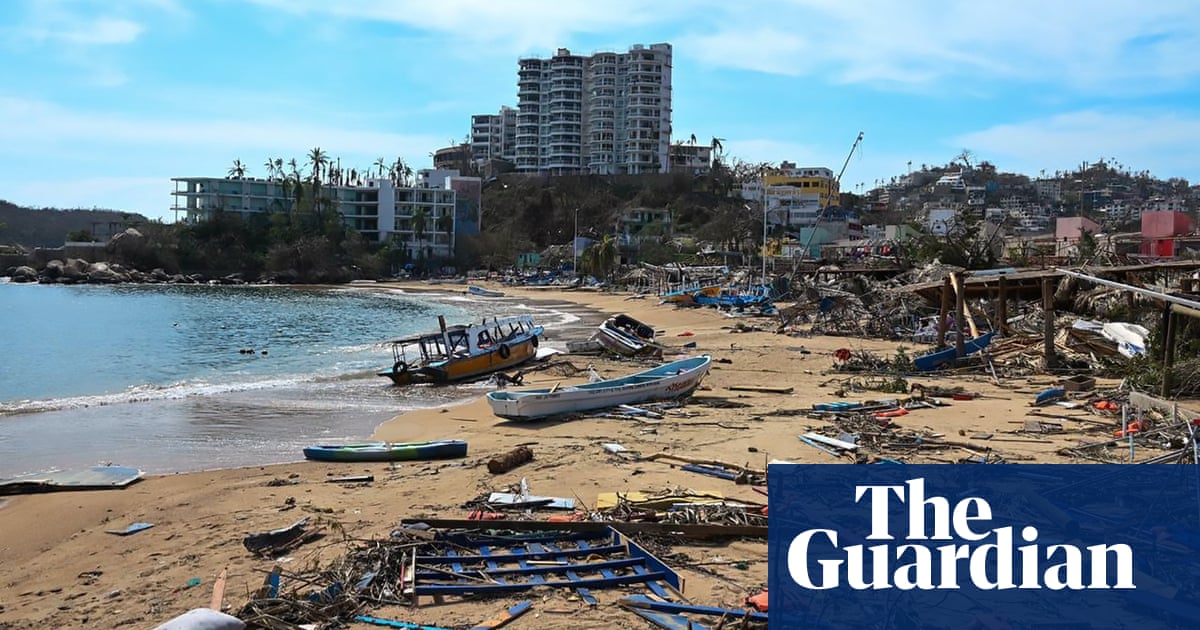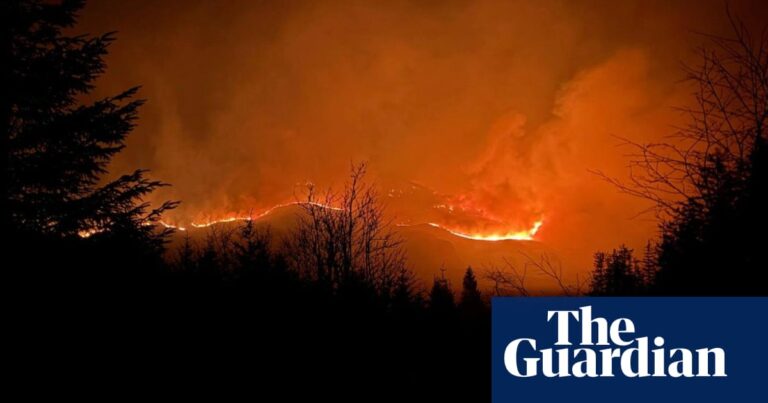
Hurricane Otis caused severe damage in the beach town of Acapulco, resulting in 27 fatalities and four individuals still unaccounted for. The storm destroyed homes and hotels, flooded vehicles, and disrupted communication systems.
The extent of the damage from the category 5 storm, which struck Mexico on Thursday with winds of 165mph, has started to become clear as thousands of first responders and military officers began to assess the damages. Nearly 8,400 members of Mexico’s army, air force and national guard were deployed to assist in cleanup efforts, the defense ministry said.
During a press conference in Mexico City, President Andrés Manuel López Obrador described the events in Acapulco as truly catastrophic. He had recently visited the affected area and noted that certain parts of the city, which is home to almost 900,000 people and a popular tourist spot, were still experiencing power outages and communication issues.
According to officials, Otis was an exceptionally strong storm that struck the country. Its sudden increase in strength while moving through warm waters off the Pacific coast surprised both forecasters and scientists, causing damage to roads and scattering debris upon making landfall.
According to officials, numerous patients are currently being relocated from ruined hospitals to more secure locations as part of the evacuation process.
As cellular network connectivity gradually improved in certain areas of the city, citizens collaborated with the assistance of acquaintances and family members residing in different regions of Mexico and the United States. They united based on their neighborhoods through virtual messaging services such as WhatsApp. By Thursday, there were about 1,000 individuals across 40 group chats.
They posted images of submerged communities and advice on locating cell phone reception, while inquiring about the well-being of family and friends who were unaccounted for. When a new member joins from a particular area, they are requested by individuals outside the city to check on other residents in that area.
Juan Pablo Lopez, age 26, was speaking with his spouse when their conversation abruptly ended on Wednesday morning due to the arrival of Hurricane Otis. His wife had recently gone back to Acapulco to support her relatives and welcome their newborn son, while Lopez remained in Cancún.
He expressed concern for his newborn son.
Without any updates on Wednesday, he organized an internet conversation with loved ones from Guerrero state, home to Acapulco, the biggest city there. He also included friends who had moved to the US and requested that they include their local connections.
Bypass the promotion for the newsletter.
after newsletter promotion
The hurricane’s sudden increase in speed, caused by a surge of warm ocean water, has sparked concerns about the effects of the climate emergency on destructive storms. Research has shown that the rapid strengthening of storms has become more frequent in a warmer environment. In just 24 hours, Otis’s wind speeds rose by approximately 110 mph, leaving little time for communities to prepare.
In the state of Guerrero, Mexico, the city of Acapulco saw a surge of tourists and attendees of a global mining conference filling its hotels. Governor Evelyn Sagaldo reported that 80% of the city’s hotels were impacted by the storm.
On Wednesday, it took authorities most of the day to partially open the main highway that connects Acapulco to Chilpancingo and Mexico City. This crucial road allowed numerous emergency vehicles, personnel, and supply trucks to reach the heavily damaged port.
Acapulco’s commercial and military airports were still too badly damaged to resume flights, though López Obrador said the plan was to establish an air bridge to move in resources.
Source: theguardian.com
















